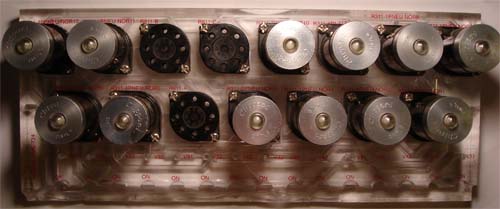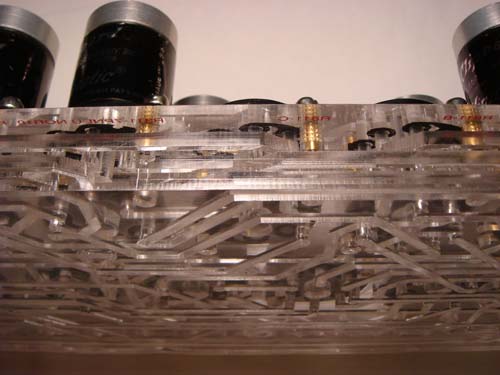Wow, a lot of people had very good answers for this one. It was hard to choose one, but I’d have to say Mark wins the prize this time. He managed to guess the manufacture and the model, which is the RMX 1450. Congratulations, and great work! Contact me to collect your prize. This is the amplifier that I use to drive my Bose 802’s, part of my DJ rig, which I haven’t had a lot of time to play with lately, unfortunately.
Short on time just now for writing a post, but basically, the reason why I had my amplifier open was to replace the cooling fan for the big heat sink bank. Since it’s an audio amp, it’s no good to have a noisy dust-laden fan blowing through it, so I replaced it with a nice new hydrowave bearing fan from Panasonic.
Archive for the ‘Hacking’ Category
Winner of Name that Ware June 2006!
Friday, August 25th, 2006Name that Ware July 2006
Wednesday, July 19th, 2006The ware for July 2006 is shown below. Click on the image for a much larger version.
I was walking around Halted Specialties about a week ago before my talk at the National Youth Leadership Forum. Halted Specialties is one of my favorite places to go and kill an hour when I’m in between meetings in silicon valley, lots of neat wares to look at and learn from. I saw this gem on the shelf and I had to buy it–I had heard of these, but never seen one of these in real life before. Honestly, I don’t know exactly what this does or what it was used for, but I do recognize that this is a very special kind of logic. To see this, check out the “wiring” that it uses:
I am looking forward to people’s guesses on this one!
Name that Ware June 2006
Wednesday, July 19th, 2006The ware for June 2006 is below. Click on the picture for a much larger image.
Hopefully this ware isn’t too easy for the readers; it’s more of a fun ware than a difficult ware. There’s a little bit of a story behind this one…I had to open this piece of equipment up about a month ago to replace the fan, because it was making too much noise for its intended application. So, I took a couple pictures and figured I’d share it with everyone. Bonus points to anyone who can figure out the make, model and power rating for this ware! Next month when I post the winners hopefully I’ll have a fun clip to post that is related to why I was fixing this ware.





